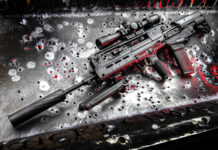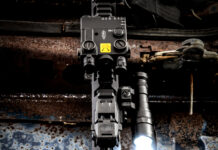While the American Go Wild rifle costs a bit more than a standard Ruger American, you’ll get a lot for your money. In addition to the upgraded camo stock, Cerakote finish, AI-type magazine and muzzle brake, the rifle has a cold hammer-forged, 22-in. barrel that did not, in testing, accumulate copper build-up very quickly. Along with 6.5 Creedmoor, the Go Wild rifle is chambered in 7mm-08, .243 Win., .308 Win., .30-06 Springfield, .450 Bushmaster and .300 Win. Mag. All have 22-inch barrels except for the .300 Win. Mag., which has a 24-inch barrel.
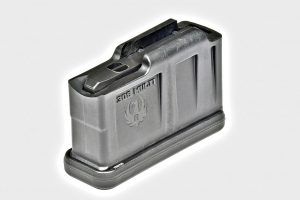
The barreled action is mated to the stock via a patent-pending integral bedding block system that solidly secures the receiver and free-floats the barrel. The lightweight stock has the shape and lines of one executed in the so-called “classic” American style, but in a nod to more contemporary styling, the forend has molded-in contours for the fingers to grip and light stipling in the customary locations. It comes with a well-fitted, soft rubber buttpad which, combined with the muzzle brake, makes this relatively light 6.6 lb. rifle’s recoil barely noticeable. I suspect that combination would be most appreciated in rifles of .300 Win. Mag. persuasion.
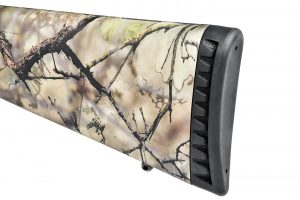
The action utilizes a full-diameter bolt body and a three-lug bolt, and the bolt handle has a 70-degree throw, providing lots of clearance for mounting scopes. Equipped with dual cocking cams, the action cycles with acceptable smoothness, although a bit of force is needed upon initial cocking with the rifle to the shoulder.
At the top rear of the action you’ll find a two-position, tang-mounted safety. It engages and disengages with authority and an audible click. When in the engaged position, it does not lock the bolt down. There’s another safety feature in the Savage-like trigger, which has a blade that must be fully depressed before the rifle can fire.
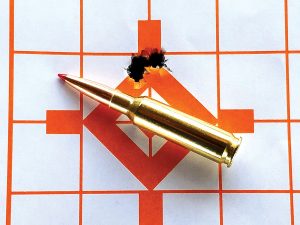
Although I find distressingly frequent reasons to criticize many production rifle triggers these days, I found the Go Wild rifle’s trigger to be pretty decent. It broke crisply with no creep and little overtravel. Ruger states that it is adjustable within a range of 3- to 5-lbs., and the trigger on my test gun broke consistently at a pull weight of 3 lbs., 12 ounces. Unlike triggers on many economy-priced rifles, it functioned nicely enough that I left it as it arrived for testing.
Preferring higher magnification for range testing, I mounted a new Bushnell Forge 3-18X50mm scope on the rifle using a set of Talley tactical rings attached to the rifle’s pre-installed Picatinny rail, and ran five different factory loads over my chronograph. Velocities ranged from 116 to 255 f.p.s. slower than factory-stated velocities out of the rifle’s 22-inch barrel. This was entirely expected, since factory numbers are typically established by testing with 24- or 26-inch barrels, depending on the ammo maker.
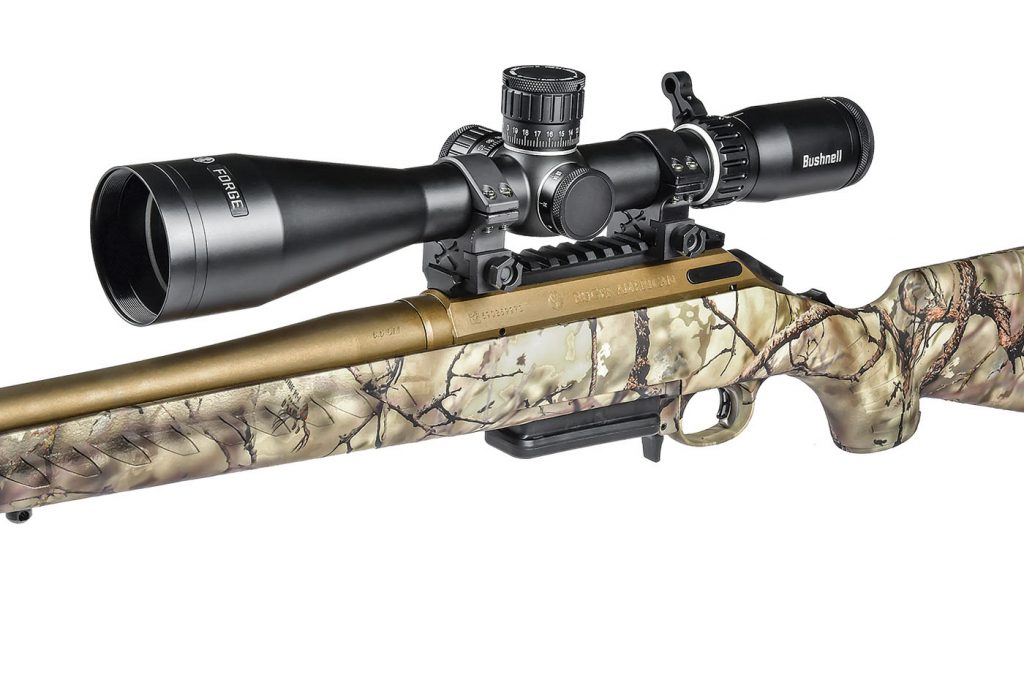
For accuracy testing, I shot three groups of three shots per load. This is my practical preference for sporter-weight hunting rifles because groups from lighter barrels tend to open up with heating, and I have yet to meet a deer willing to stand statue-still while being shot at five times. Ruger claims minute-of-angle accuracy for the rifle, and the Ruger American rifles have earned a reputation for being accurate shooters out of the box. Still, I was pleasantly surprised to quickly discover that the rifle met—and demolished—that MOA standard.
Despite shooting in wind blowing 10- to 14-mph, every single load tested, save one, produced an average group size of considerably less than one inch at 100 yards. The only load that didn’t, using a lighter 120-grain bullet, still had an average group size of exactly one inch. Impressively, four of five tested loads turned in best groups that were quite close to or less than half an inch, and a Black Hills Gold round using a 143-gr. ELD-X bullet won the day with a 0.24-inch best group (or single ragged hole, if you prefer) and an average group size of 0.67 inch.










